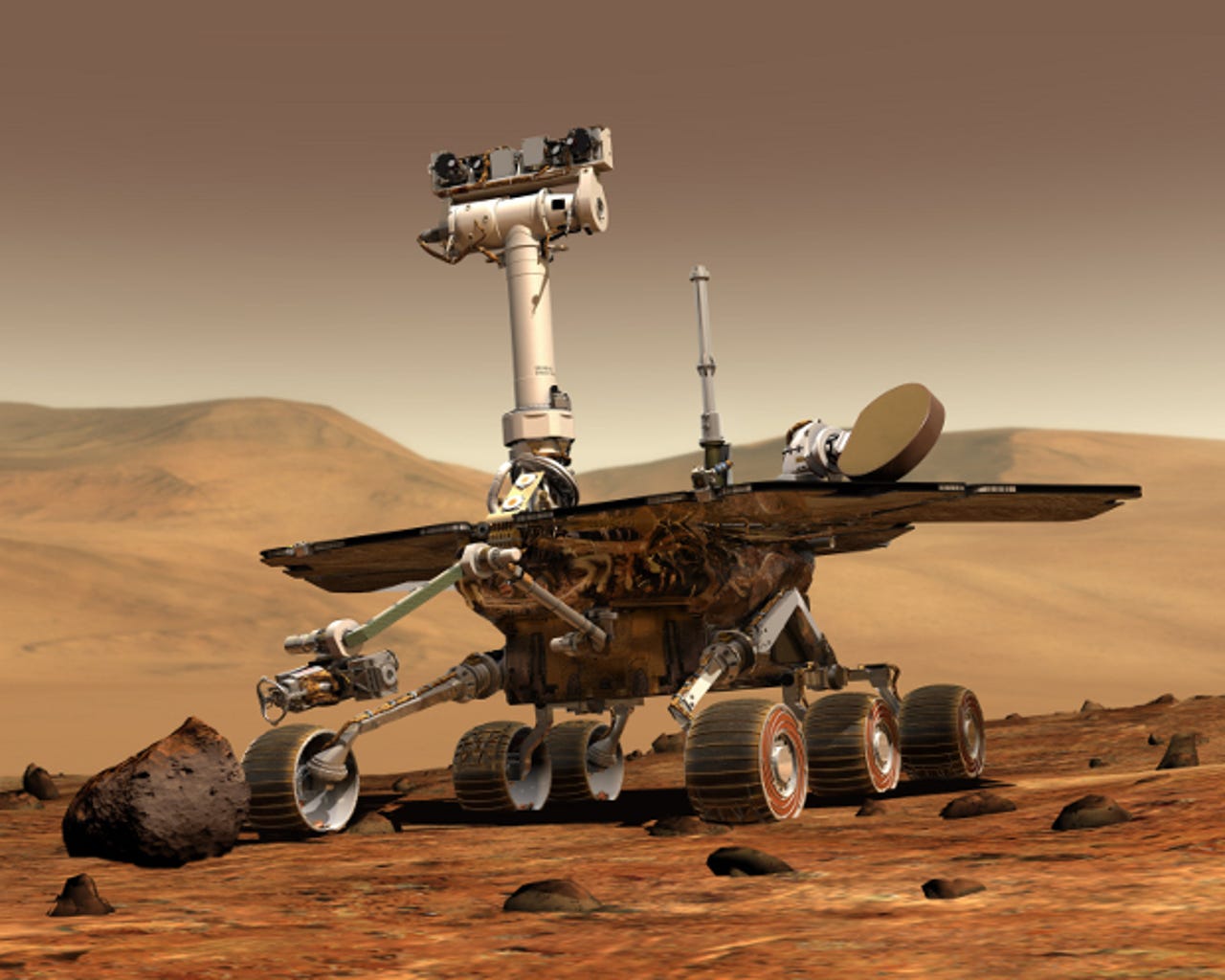Rebooting on Mars

If you think fixing computer problems on your PC is a pain, trying fixing them from 125 million miles away. That's exactly what NASA's JPL Mars Exploration Rover (MER) team will be doing soon.
The Opportunity rover, which has been exploring Mars for ten years now, has been randomly rebooting for several months. Because the rover always came back, the team tried ignoring the problem, but just like you with a misbehaving computer, the day finally came when they couldn't put up up with it anymore.

The scientists believe that the rebooting is happening because of trouble with the Opportunity rover's 256MBs of flash storage. "Worn-out cells in the flash memory are the leading suspect in causing these resets," said John Callas, the project manager for NASA's Mars Exploration Rover Project in a statement.
This isn't the first time aging flash memory has given the rovers trouble. Opportunity's twin Spirit had serious trouble with its flash memory thanks to a bug when it first landed in 2004. Then, in 2009, NASA also had to reformat Spirit's flash memory due to problems similar to the ones affecting Opportunity today.
Read all parts of the "To the Moon" series by Jason Perlow
Flash memory, when used properly, in a solid-state drive can have a longer effective life than a hard drive. Like any other kind of storage, flash does fail over time. Considering the state of flash storage in 2003 when Opportunity was built, its flash storage longevity has been nothing short of amazing.
Before reformatting the flash drive, NASA will be downloading all useful data remaining on it and switching the rover to an operating mode that does not use flash memory. "The flash reformatting is a low-risk process," said Callas, "as critical sequences and flight software are stored elsewhere in other non-volatile memory on the rover."
Considering that Opportunity, which uses the Unix-based VxWorks and is controlled by Linux workstations, relies on an 11-year-old 20 MHz IBM radiation-hardened single-board computer (SBC) RAD6000 CPU with 128MBs of RAM, it's amazing that Opportunity is running at all. Because it was expected to have a working life of 90 days, Opportunity's extended life has been an unexpected blessing for Mars exploration. Here's hoping the reformatting will work well and Opportunity will keep exploring Mars for years to come.
Related Stories:
- NASA fixes bug that put Curiosity Mars rover on standby
- NASA gives Curiosity Mars rover its first major software update
- To infinity and beyond! Voyager 1 is indeed in interstellar space
- Penguins in Space! Asteroid mining and Linux
- Curiosity rover celebrates first year on Mars by singing happy birthday to itself